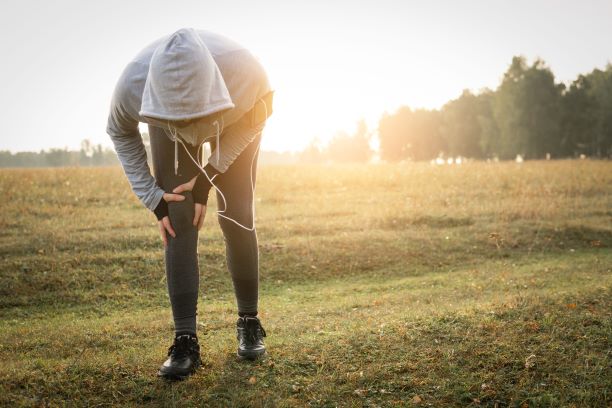The most common overuse injuries

Overuse injuries occur when a particular part of the body is subjected to repeated demand over a long period of time. Activity that involves using the same motions over and over - particularly if these are ramped up too quickly, performed for extended periods or made using an incorrect or unsafe technique - can cause tissue damage.
Below are some of the most common overuse injuries in different types of body tissue.
Stress fracture
A stress fracture is a small crack in otherwise normal bone that occurs when the bone has been subject to repeated impact. Stress fractures are most common in weight-bearing bones, such as the shin or foot.
Often seen in runners, stress fractures can be a result of a sudden change in physical activity or increasing training without enough rest or recovery time in between sessions.
To avoid stress fractures, follow a sensible training program that increases your activity gradually and allows plenty of rest time (ask a physiotherapist for advice if you’re unsure). You can also look after the health of your bones by eating a diet high in calcium and Vitamin D.
Tendonitis or Tendonosis
Tendonitis is irritation or inflammation of a tendon, caused by repetitive actions in that area. Activities like gardening, painting, cleaning, throwing a ball and playing tennis can cause tendonitis.
To reduce your risk of tendonitis, try to build up your activity levels gradually rather than doing too much too soon. Take regular breaks and limit the amount of force you use in your actions.
Tendonosis is considered more like a degenerative condition. Occurring more commonly in middle age and especially in men, due to higher levels of testosterone, leading to to 'drier' collagen fibres. Rather than inflammation, the tendon may show signs of swelling and necrosis.
Blisters
Blisters form to protect the skin and can be caused by repeated friction from rubbing or pressure. If you have ever had a pair of shoes that didn’t fit well or were stiff in certain places, you might have experienced a friction blister where they rubbed your foot or ankle.
To avoid blisters forming, protect your skin from friction where possible (for example, by wearing socks, or wearing gloves if you are using tools that rub your hands).
If you do develop a blister, keep it clean and dry and try to leave it alone as much as possible. Resist the temptation to pop it.
Strained muscle
Overstretching or tearing a muscle, by overusing it or using poor technique, can result in pain, inflammation and limited movement. Any muscle can be strained in this way, but it is most common in the lower back, neck, shoulder and hamstring.
To reduce your risk of straining a muscle, warm up and cool down properly before and after exercise and get professional advice to ensure you’re using the correct technique. Poor posture can also strain your muscles, so consider the way you are sitting and standing, especially for long periods of time.
Physiotherapists don’t just help you recover from injury - we also try to prevent you getting them in the first place. If you think you might be at risk from overuse injuries, give us a call on 02 9922 6806. and we’ll discuss whether there are steps you can take to protect your body. Proactive care may seem unnecessary at times, but it is the most pain-free (and affordable) way to manage injuries before they make themselves apparent.
References
1. Oxford University Hospitals. 2018. Bone Stress Injuries and Stress Fractures. [Onlinehttps://www.ouh.nhs.uk/patient-guide/leaflets/files/41517Pfractures.pdf
2. WebMD. 2018. Tendinitis. [Onlinehttps://www.webmd.com/fitness-exercise/arthritis-tendinitis
3. Healthline. 2018. Muscle Strains. [Onlinehttps://www.healthline.com/health/strains#_noHeaderPrefixedContent
Uploaded : 22 February 2021




